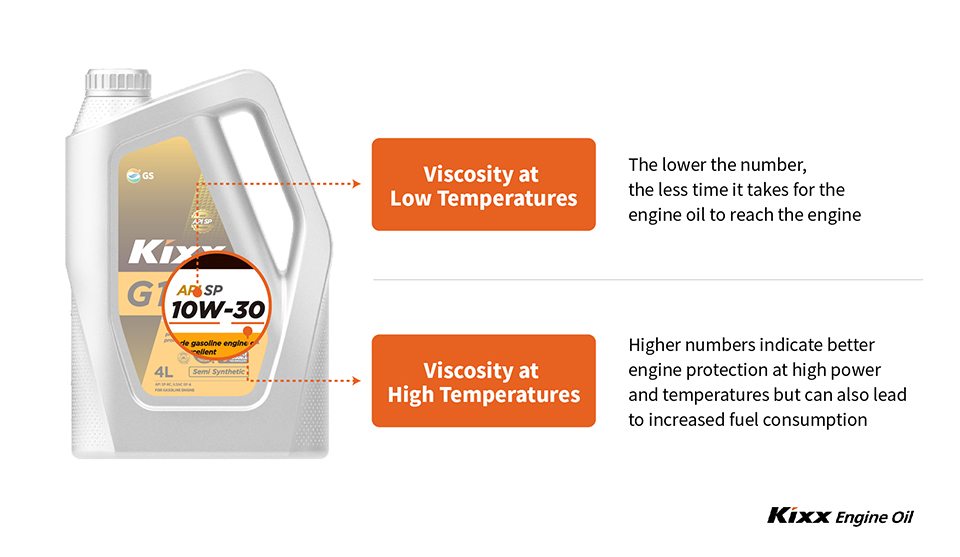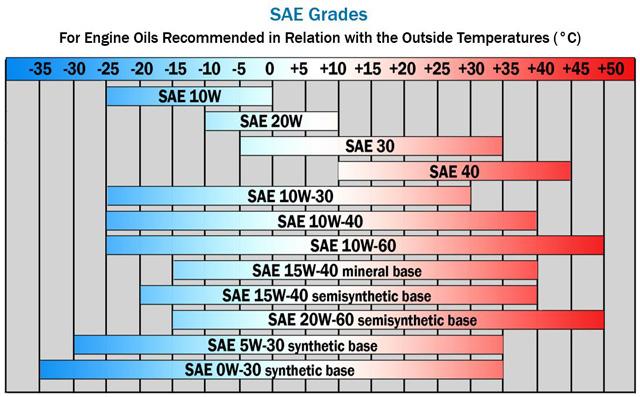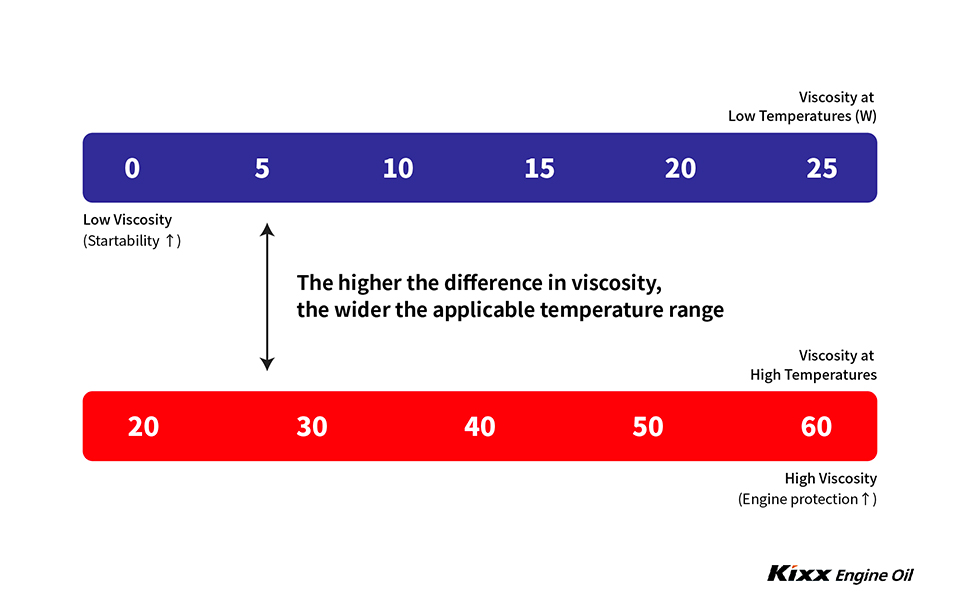The oil viscosity chart provides a comparison of different oil grades and their viscosity at different temperatures. Understanding the chart helps in selecting the right oil for your vehicle’s engine.
Choosing the right engine oil is crucial for maintaining the performance and longevity of your vehicle. The oil viscosity chart, based on the API lubricant organization’s scale, helps users to compare, choose, and substitute oils for various machines. Viscosity measures the oil’s resistance to flow at different temperatures, and the chart assists in determining the appropriate oil weight for engines operating at high temperatures.
By understanding the viscosity grades and the specifications chart, vehicle owners can ensure the correct oil selection for their vehicles, ultimately contributing to their optimal performance and durability. In practical terms, the oil viscosity chart provides essential information about the resistance of oil to flow, aiding in the selection of the most suitable oil for a vehicle’s engine.

Credit: news.kixxoil.com
Importance Of Oil Viscosity
The viscosity of oil plays a crucial role in the optimal functioning of engines. Understanding the importance of oil viscosity is key to ensuring the longevity and performance of your vehicle.
Impact On Engine Performance
The viscosity of oil directly affects the engine’s performance, influencing crucial factors like lubrication and fuel efficiency. Proper viscosity ensures smooth operation.
Effect On Engine Wear And Tear
Choosing the correct oil viscosity can significantly impact engine wear and tear, reducing friction and maintaining internal components in top condition for extended periods.
Understanding Oil Viscosity Ratings
Dive into the world of oil viscosity ratings with an insightful Oil Viscosity Chart. This tool simplifies choosing the right oil grade for your vehicle, based on its resistance to flow at different temperatures. Understand the viscosity scale developed by the API for optimal engine performance.
Api Lubricant Organization Standards
The viscosity of motor oil is determined based on a scale developed by the API (American Petroleum Institute) lubricant organization. This scale helps to define the thickness or “weight” of the oil, which is a crucial factor in how well it can lubricate engine parts and withstand the demands of various temperatures. The API has established different standards for motor oils, with designations such as “SA” for gasoline engines and “CF” for diesel engines. These standards ensure that the oil meets certain specifications and performance requirements to provide optimal protection for your engine. It’s important to check the API rating on the oil you choose to ensure it is suitable for your vehicle’s engine type.
Viscosity Index And Temperature
The viscosity of oil varies with temperature, and this is where the viscosity index comes into play. The viscosity index (VI) is a measure of how much the viscosity of oil changes with temperature. Oils with a high viscosity index have a smaller change in viscosity when exposed to temperature fluctuations, making them more stable and effective across a wide range of temperatures. When selecting oil for your vehicle, it’s crucial to consider the temperature extremes it will be exposed to. If you live in an area with cold winters, you’ll want to choose an oil with a lower winter viscosity, such as 5W-30. On the other hand, if you reside in a region with hot summers, a higher viscosity oil like 10W-40 may be more suitable. Be sure to consult the manufacturer’s recommendations to determine the proper viscosity range for your vehicle. To help you better understand the different oil viscosity ratings and their corresponding temperature ranges, refer to the following table:
| Viscosity Grade | Cold Temperature Range (°C) | Hot Temperature Range (°C) |
|---|---|---|
| 5W-30 | -30 to -20 | 10 to 30 |
| 10W-40 | -20 to 0 | 20 to 50 |
| 15W-50 | 0 to 10 | 30 to 60 |
Remember, the goal is to choose an oil viscosity that will provide adequate lubrication and protection for your engine under the specific temperature conditions it will face. In conclusion, understanding oil viscosity ratings is essential for maintaining the performance and longevity of your vehicle’s engine. By considering the API lubricant organization standards and the viscosity index in relation to temperature, you can make an informed decision when choosing the right oil for your vehicle.
Choosing The Right Viscosity Grade
When it comes to selecting the right engine oil for your vehicle, one crucial factor to consider is the viscosity grade. The viscosity grade indicates the oil’s resistance to flow at different temperatures, making it essential for optimal engine performance and protection.
Consideration Of Operating Temperatures
The operating temperature range of your engine plays a significant role in determining the ideal viscosity grade. For lower temperatures, such as during winter or in colder climates, oils with a lower viscosity grade, like 0W-20 or 5W-20, are recommended. These oils flow more easily in cold conditions, ensuring proper lubrication during start-up.
On the other hand, for hotter temperatures or high-performance engines, oils with a higher viscosity grade, like 10W-40 or 20W-50, provide better protection. They are designed to maintain consistent oil flow and thickness even under extreme heat, preventing engine wear and breakdown.
Compatibility With Engine Specifications
Another crucial consideration when choosing the right viscosity grade is compatibility with your engine specifications. Engine manufacturers typically recommend specific viscosity grades for optimal performance and longevity. It is important to check your vehicle’s owner’s manual or consult with a qualified technician to ensure you are using the correct viscosity grade recommended by the manufacturer.
In addition to viscosity grade, it’s also essential to consider the oil’s overall quality. Look for oils that meet or exceed industry standards and certifications, such as API (American Petroleum Institute) ratings. These certifications ensure that the oil has undergone rigorous testing and meets the necessary performance requirements for your engine.
In conclusion, choosing the right viscosity grade for your engine oil is crucial for ensuring optimal performance, protection, and longevity. Consider your operating temperatures and compatibility with engine specifications to make an informed decision. By selecting the appropriate viscosity grade, you can maximize the efficiency and durability of your engine, ultimately saving you time and money in the long run.
Comparing Different Oil Grades
Oil viscosity plays a crucial role in the performance and longevity of a vehicle’s engine. When comparing different oil grades, it’s essential to understand the differences between them to make an informed choice for your vehicle.
Comparison Of 0w20, 5w20, And 10w30
0W20: This oil grade offers excellent cold-weather starting and high-temperature protection, making it ideal for modern engines with tight tolerances.
5W20: Slightly thicker than 0W20, this grade provides good all-season protection, balancing cold-start performance with high-temperature stability.
10W30: A traditional oil grade suitable for older vehicles, 10W30 offers reliable protection in moderate climates and older engine designs.
Evaluation Of Synthetic Vs. Conventional Oils
- Synthetic Oils: Provide better protection at extreme temperatures, resist breakdown, and offer improved fuel efficiency.
- Conventional Oils: Affordable option for standard driving conditions, but may require more frequent changes and offer slightly lower performance.
Viscosity Chart And Guides
When it comes to understanding the performance of different oils, an oil viscosity chart is a valuable tool. It provides essential guidance on the viscosity of various oils, allowing users to make informed decisions when selecting the right oil for their specific needs.
Accessing Oil Viscosity Charts
Oil viscosity charts are readily available online and can be accessed with a simple internet search. These charts provide comprehensive information on the viscosity of different oils at various temperatures, enabling users to understand how the oil’s thickness changes under different conditions.
Using Big List Of Oils For Substitution
Aside from viscosity charts, there are substantial lists of oils for substitution, aiding in the selection process. These lists offer alternatives to specific oils, ensuring that users can find suitable replacements based on their requirements and the availability of certain oils.

Credit: www.machinerylubrication.com
Expert Recommendations
When it comes to choosing the right oil viscosity for your vehicle, it can be overwhelming with so many options available. That’s why we’ve gathered expert recommendations to make the decision easier for you. Let’s take a look at what oil manufacturers and lubricant specialists have to say.
Suggestions From Oil Manufacturers
Oil manufacturers, such as Castrol and Penrite Oil, provide valuable insights into oil viscosity. According to the American Petroleum Institute (API), the organization responsible for developing the viscosity scale, oil viscosity grades are based on their recommendations. These manufacturers have extensive knowledge and experience in producing high-quality lubricants, and their recommendations are worth considering.
Insights From Lubricant Specialists
Lubricant specialists, such as those at AMSOIL and Jiffy Lube, offer valuable insights into oil viscosity as well. They explain that viscosity measures the resistance of oil to flow and determine how easily it pours at different temperatures. These specialists provide valuable information on understanding oil viscosity and its importance for proper engine lubrication. Their expertise helps consumers make informed decisions when choosing the right oil viscosity grade for their specific vehicle.
Choosing The Right Oil Weight
When it comes to engines, choosing the right oil weight is crucial. Engines have specific requirements for optimal performance and protection. Viscosity charts, such as those provided by Anton Paar and Oil Viscosity Chart, are valuable resources that provide viscosity and density values at various temperatures. This information allows consumers to select the appropriate oil weight for their engines, ensuring optimal lubrication and performance.
In conclusion, when it comes to selecting the right oil viscosity, it’s essential to consider expert recommendations from oil manufacturers and lubricant specialists. Their insights provide valuable guidance and help consumers make informed decisions. Consulting viscosity charts for specific temperature recommendations is also crucial to ensure proper engine lubrication. By following these expert recommendations, you can ensure optimal engine performance and longevity.
Practical Application
Choosing the right viscosity grade is crucial for optimal engine performance.
Implementing Correct Oil Viscosity
- Select oil based on manufacturer recommendations.
- Refer to oil viscosity chart for accurate selection.
Monitoring Oil Performance
- Regularly check oil levels and color for contamination.
- Observe engine temperature changes for viscosity impact.
| Viscosity Grade | Temperature Range |
|---|---|
| 5W30 | -30°C to 40°C |
| 10W40 | Below 0°C to 50°C |
Checking the viscosity of oil is essential for optimal engine lubrication.
By implementing the correct viscosity grade and monitoring oil performance, you can ensure your engine operates efficiently.

Credit: news.kixxoil.com
Frequently Asked Questions Of Oil Viscosity Chart
Which Oil Is Thicker 5w30 Or 10w30?
The 10w30 oil is thicker than 5w30. Viscosity measurements indicate the oil’s fluidity and resistance to flow.
What Do Oil Viscosity Numbers Mean?
Oil viscosity numbers indicate the oil’s thickness. Lower numbers flow easily, better for cold starts, while higher numbers maintain viscosity at higher temps.
Is 10w40 Thicker Than 10w30?
Yes, 10W40 is thicker than 10W30 based on the numerical values of their viscosity grades.
Which Oil Is Thicker 20 Or 30?
The oil viscosity chart shows that 20 oil is thicker than 30 oil. The higher the number, the thicker the oil.
Conclusion
In understanding oil viscosity, knowing the right oil for your engine is crucial. Use viscosity charts for optimal performance. Choose wisely for efficiency.
